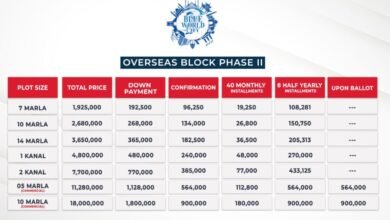Understanding Joao Pedras Vasconcel’s FDA Audit Patterns

When your organization is preparing for an FDA inspection, every detail matters, especially who the inspector is. The FDA’s inspection framework is standardized, but each inspector brings their lens, emphasis areas, and style of interaction. One name that has stood out to quality assurance teams across the pharmaceutical and medical device industries is Joao Pedras Vasconcel.
If you’re expecting an inspection by him or simply want to improve your audit preparedness, understanding his inspection history and common 483 observations can provide a valuable edge.
You can explore his full inspection record, focus areas, and trends on Joao Pedras Vasconcel FDA, hosted on Atlas Compliance.
Who Is Joao Pedras Vasconcel?
Joao Pedras Vasconcel is a seasoned FDA investigator known for his thorough evaluations, particularly in pharmaceutical manufacturing facilities. With multiple years of inspection history, his audit approach emphasizes documentation integrity, process consistency, and adherence to current Good Manufacturing Practices (cGMP).
He has conducted inspections across a wide variety of facility types, ranging from small biologics labs to large-scale commercial drug manufacturers. That breadth of experience has contributed to a pattern-based audit style: he often spots issues that others may miss.
Common Focus Areas in Vasconcel’s Inspections
Based on data gathered from past audits, here are the top areas where Joao Pedras Vasconcel tends to focus:
1. Batch Record Accuracy and Traceability
Incomplete or inconsistent manufacturing records often trigger immediate scrutiny. Vasconcel frequently cites gaps in batch record documentation or misaligned entries that don’t reflect actual process events.
Your action point: Ensure batch records are maintained in real-time, with no post-event updates or missed entries. Include audit trails where digital systems are used.
2. Deviation Handling and Root Cause Analysis
He pays particular attention to how facilities manage deviations, both in terms of thoroughness and timeliness. Superficial investigations, repeated root causes, or closed CAPAs without proof of effectiveness are commonly flagged.
Your action point: Use structured root cause tools (like the 5 Whys or Fishbone Diagram), and document CAPA implementation and follow-up clearly.
3. Employee Training and Role Clarity
Vasconcel has issued 483s for employees performing GMP tasks without current or role-specific training. In some cases, personnel were unaware of key SOPs relevant to their function.
Your action point: Maintain updated training matrices and conduct mock interviews with frontline staff before inspections.
4. Cleaning Validation and Cross-Contamination Controls
Especially in multi-product facilities, he often inspects cleaning logs and validation reports closely. If products share equipment, Vasconcel checks whether cleaning procedures eliminate all residues effectively.
Your action point: Ensure that cleaning validation is product-specific, scientifically justified, and well-documented, especially swab sampling and residue limits.
483 Trends in Joao Pedras Vasconcel’s Past Inspections
A deeper look at 483 forms issued by Joao Pedras Vasconcel shows a pattern of recurring concerns across several categories. These highlight where your team should focus extra attention:
- Data Integrity Issues: Several citations involve a lack of proper audit trails, backdated entries, and inadequate user access controls, especially in electronic record systems (e.g., LIMS, MES).
- Repeat Observations: In some facilities, Vasconcel has noted repeated deficiencies in deviation management and inadequate CAPA effectiveness, often citing poor follow-through as a red flag.
- Inadequate Cleaning Logs: Many 483s include missing or incomplete cleaning records, especially in shared equipment environments. Inadequate cleaning verification (e.g., missing swab results or acceptance criteria) is frequently called out.
- Training Gaps: Observations often cite a lack of documented role-based training or staff unfamiliarity with SOPs, especially when changes are introduced but training logs are not updated.
- Batch Record Anomalies: These include mismatched signatures, non-contemporaneous documentation, and batch reconciliation inconsistencies, issues that are easy to overlook but frequently cited.
Pro tip: Compare your internal audit reports with these trends and close gaps early. These patterns are not just citations; they reflect operational risks that Vasconcel is trained to spot quickly.
Why You Should Track Inspector-Specific Patterns
Not all FDA inspections are created equal. Knowing how a particular inspector approaches audits can help your team stay a step ahead. By reviewing prior inspections by Joao Pedras Vasconcel FDA, you can:
- Anticipate key questions: Based on his audit history, expect questions around batch record accuracy, deviation handling, and cleaning validation. Prep your team with direct answers and supporting documents.
- Align your documentation: Organize SOPs, batch records, and CAPAs in a format that matches his typical inspection flow, clear, labeled, and easy to navigate.
- Audit where it matters most: Focus internal audits on areas he frequently flags, such as incomplete investigations or outdated training records.
- Boost team confidence: Run mock interviews and walkthroughs so staff can clearly explain their responsibilities and refer to the right SOPs without hesitation.
Atlas Compliance provides a searchable database where you can explore these patterns and tailor your preparation accordingly. Check it out here: Joao Pedras Vasconcel FDA
Read Also: How a Canadian French Translation Agency Helps Immigrants Integrate into Quebec’s Workforce
Smart Tips to Prepare for an Inspection by Joao Pedras Vasconcel
- Conduct a mock audit that mirrors an actual FDA inspection, focusing on batch records, deviation handling, and cleaning validation.
- Train floor staff through role-play exercises so they can clearly explain their tasks and refer to relevant SOPs.
- Review your deviation log for completeness; every deviation should have a root cause analysis, CAPA, and follow-up documented.
- Audit your data integrity systems by checking audit trails, system access controls, and real-time documentation practices.
- Revalidate cleaning processes where necessary, ensure cleaning logs are complete, swab results are within limits, and procedures align with current practice.
- Maintain an up-to-date training matrix, documenting role-specific training and timely requalification after SOP changes.
- Organize documentation for fast retrieval during inspection, batch records, validation protocols, and CAPA reports should be well-labelled and easily accessible.
- Prepare supporting data in advance and don’t make the inspector search for what should be readily available.
Final Thoughts
FDA inspections are about more than compliance; they’re about trust, consistency, and your commitment to patient safety. Inspectors like Joao Pedras Vasconcel don’t just enforce regulations; they highlight vulnerabilities that, if left unaddressed, could have real-world consequences.
By understanding the common themes in his 483s and audit style, you give your team the chance to prepare smartly and confidently. For more detailed insights, check his inspection history and trends at Joao Pedras Vasconcel FDA.






